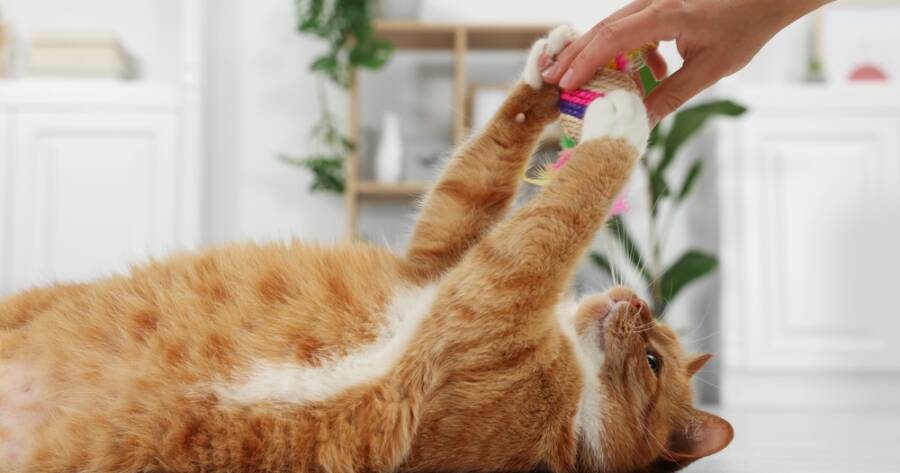Indoor cats may live safer lives, but they still crave stimulation, variety, and adventure within their environment. Without enough mental and physical engagement, boredom can lead to stress, destructive behavior, or even health issues. The good news? You can turn any living space into a feline playground with a few thoughtful additions. Creating an enrichment area tailored to your cat’s instincts keeps them happy, active, and thriving—no matter how many square feet you share.
Provide Vertical Space for Climbing and Perching
Cats naturally love to climb and observe the world from above. Adding vertical elements like cat trees, wall-mounted shelves, or window perches gives your indoor cat a sense of territory and control over their environment. These elevated spots also serve as quiet retreats when your cat wants to relax or nap undisturbed.
Not only does vertical space help mimic the experience of being outdoors, but it also encourages healthy exercise and exploration. If you’re short on floor space, focus on creating vertical layers that allow your cat to jump, climb, and rest at different heights. Even a single well-placed perch by a sunny window can become your cat’s favorite spot in the house.
Include Interactive Toys and Puzzle Feeders
Mental stimulation is just as important as physical activity for indoor cats. Interactive toys, such as feather wands, laser pointers, and battery-operated prey mimics, help satisfy your cat’s natural hunting instincts. Rotate these toys regularly to keep things fresh and exciting.
Puzzle feeders and treat-dispensing toys turn mealtime into a game, slowing down eating and providing brain-teasing challenges. You don’t need to spend a fortune! DIY options like hiding kibble in a cardboard egg carton or using crumpled paper can be just as effective. Keeping your cat mentally engaged helps reduce boredom and curbs unwanted behaviors like over-grooming or scratching furniture.
Create Cozy Hideaways and Resting Spots
Cats need a balance of activity and rest, and cozy hideaways are essential for their comfort and well-being. Provide soft beds, cubby holes, or covered spaces where your cat can feel safe and secure. Cardboard boxes, enclosed hammocks, or cat tents are simple yet effective additions.
Place these hideouts in quieter parts of your home so your cat has a peaceful place to retreat. Having multiple resting spots at different heights or locations allows your cat to choose where they feel most comfortable throughout the day. A happy cat is one who knows they have a space to call their own.
Make Windows a Source of Entertainment
A window with a view can be a source of endless fascination for your indoor cat. Set up a perch or cat bed near a window where they can watch birds, squirrels, passing cars, or even just the wind in the trees. The ever-changing outdoor world keeps their senses sharp and their curiosity piqued.
To take it up a notch, consider installing a bird feeder outside the window or playing nature videos on a screen. If your cat enjoys fresh air safely, a screened-in catio or window box can provide a safe outdoor-like experience. These setups give your cat a deeper connection to the outside world while staying safe indoors.
Encourage Scratching and Physical Exercise
Scratching is a natural behavior that helps cats stretch, mark their territory, and keep their claws healthy. Provide a variety of scratching surfaces, such as vertical posts, horizontal pads, and cardboard scratchers, to satisfy their needs. Experiment with different textures like sisal, carpet, and wood to find what your cat prefers.
In addition to scratching options, make sure your cat has space to run and play. Use hallway zoomies to your advantage by tossing toys for chase games or setting up tunnels to sprint through. Regular bursts of activity help your cat burn off energy and stay physically fit, which is especially important for indoor-only lifestyles.
Add Sensory Elements to Keep Things Interesting
Cats are highly sensory creatures, and adding stimulating scents, textures, and sounds can enrich their environment. Rotate toys with different fabrics, crinkly materials, or bells. Use catnip, silvervine, or valerian root to create exciting experiences, but introduce these in moderation to avoid overstimulation.
Calming scents, like feline pheromone sprays, can also help create a relaxing atmosphere. Play soft music or nature sounds while you’re away to prevent loneliness. The more variety you offer, the more your cat will enjoy their space—and the less likely they’ll be to develop anxiety or destructive habits.
A Space That Grows With Your Cat
An enriching environment isn’t something you build once, it’s something that evolves with your cat’s needs, preferences, and age. As they grow older or develop new behaviors, adjusting their space can help maintain their well-being and happiness. Pay attention to what your cat enjoys most and build from there. Whether it’s high perches, engaging toys, or cozy nooks, the ultimate enrichment space is one that reflects your cat’s unique personality and gives them the freedom to be fully themselves, right at home.

